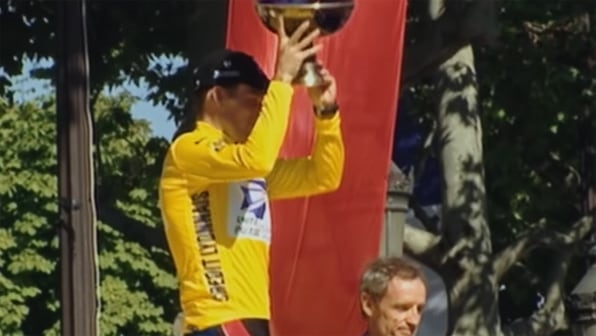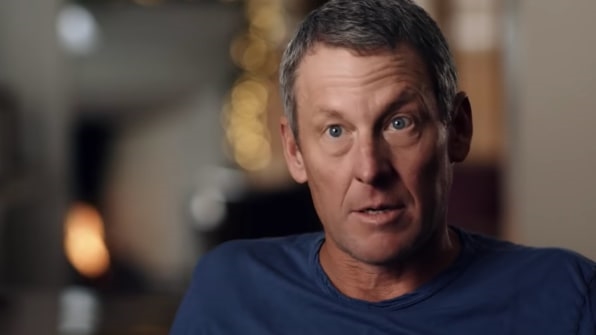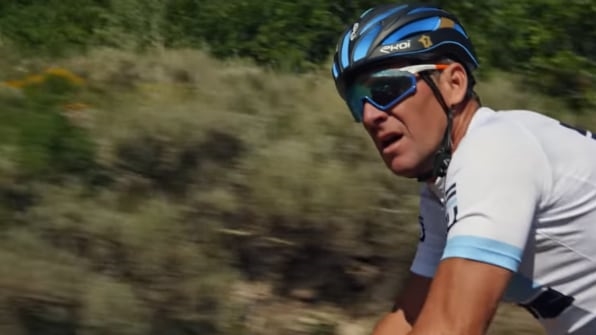ESPN’s Michael Jordan documentary The Last Dance proved that a juicy documentary can quench our thirst for sports stories after two months without live games. On the heels of that hit, ESPN has scheduled Lance, ESPN’s new two-part documentary about one of the most controversial figures in sports, Lance Armstrong.
Armstrong’s story has been told before: The documentary comes seven years after the disgraced cyclist gave his doping confession to Oprah Winfrey, and that year, another documentary The Armstrong Lie, was released. Since then, the former cyclist’s reputation has suffered even more with memoirs by former teammates being released, and several apology tours that have seemed to have little impact.
Lance‘s director, Marina Zenovich, has primarily focused on complicated men in her work. Her previous subjects include Roman Polanski, Robin Williams, and the Duke lacrosse team. The unflinching eye she trains on Armstrong alone makes the documentary worth watching. She does not shy away from hard questions—about whether we should forgive his doping during the Tour De France, and whether we are overlooking the work he has done advocating for cancer patients.
“[Armtstrong] said he would cooperate, and he said I could ask him anything I want, so I was intrigued,” Zenovich says. “It was interesting to see him try and impose his own narrative, or manipulate me in some way, to see his side of things.”

Thankfully, Armstrong’s voice is not the only one we have to rely on (the man really holds a grudge against some former teammates). Zenovich found family members and former teammates to present an exhaustive account of what happened and how Armstrong’s actions against a former teammate put that person in a position to rat him out.
Lance takes us from Armstrong’s childhood in Plano, Texas, and the discovery of his athletic talent as he started competing in triathlons through his rise and fall. His rise is thrilling—even if none of the players seem to believe he could have done it without performance-enhancing drugs (which were widespread in the cycling world). Watching clips of a young and cocky Lance Armstrong, determined to win at all cost, is fascinating.

The documentary also shows him moving from being a star in the relatively unknown world of cycling, to becoming famous enough to end up on a box of Wheaties and inspire kids around the world to wear the famous Livestrong yellow plastic bracelets. We also get to see Armstrong’s ability to intimidate journalists and former teammates using the “cancer shield.”
“He’s become this larger than life figure, but in the documentary he’s just a human being. You see him with his kids, you see him at events now. You see him try to make sense of his story.” Zenovich says.

The documentary reveals a reflective and apologetic Armstrong, who still seems to be coming to terms with his downfall. It also shows how he might have gotten away with taking PEDs had he not staged an improbable return to the sport, placing third in the Tour de France in 2009 after taking a break in 2005.
Still, Armstrong’s hubris and the limits of his ability to reflect on his past actions are evident. When Zenovich asks him whether he would counsel his son, a football player at Rice University, to take performance-enhancing drugs, he replies, “I would say, ‘That’s a bad idea. You’re a freshman in college, that’s . . . . It might be a different conversation if you were in the NFL, but at this point in your career, not worth it.’”
Fast Company , Read Full Story
(39)